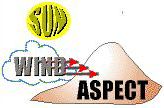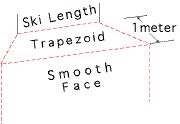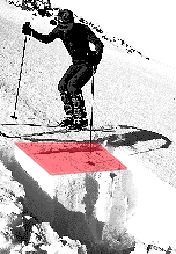Home
 The Rutschblock Test is useful as both an indicator of local snow stability and to identify weak layers in a snow pack. Only perform this test on a safe slope greater than 300. Pick a test slope with the same aspect ,angle and elevation of the slope you propose to cross.
The Rutschblock Test is useful as both an indicator of local snow stability and to identify weak layers in a snow pack. Only perform this test on a safe slope greater than 300. Pick a test slope with the same aspect ,angle and elevation of the slope you propose to cross.
 Excavate a pit as long as a pair of skiis to the ground or at least 6 feet deep . Smooth the uphill face as you would a shovel shear pit. Isolate a a trapezoidal section of snow from the smooth face back a meter. You can use snow saws, skiis, or rope to seperate the sides and back of this colum. The angled sides of the trapezoid will let the block slide down hill easily if it shears.
Excavate a pit as long as a pair of skiis to the ground or at least 6 feet deep . Smooth the uphill face as you would a shovel shear pit. Isolate a a trapezoidal section of snow from the smooth face back a meter. You can use snow saws, skiis, or rope to seperate the sides and back of this colum. The angled sides of the trapezoid will let the block slide down hill easily if it shears.
A skier will stand above the isolated block and carefully transfer their weight onto the block in stages. Measured weight transfer can stress the isolated colum until it fails. A failure shows how much stress the snowpack can handle and where the dangerous layers are located in the snowpack.
Home | PageTop
Sources: "Avalanche Handbook" Ron Perla and M.Martinelli jr. 1976 USDA
"Avalanche Safety for Skiers & Climbers" Tony Daffern 1992 CLOUDCAP
"The Rutschblock as a practical tool..." P.M.B. Fohn 1987 IAHS Publ. 162
